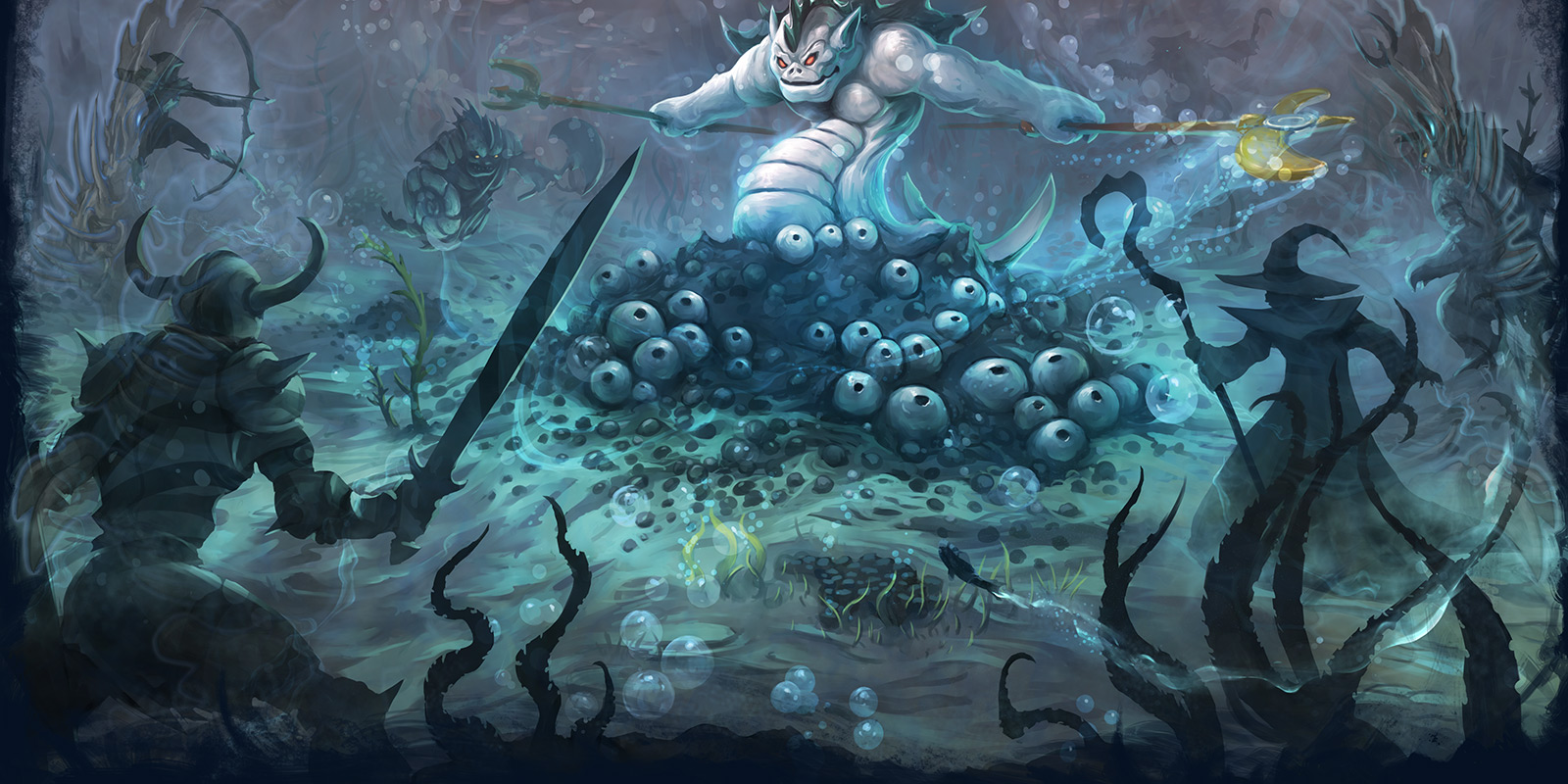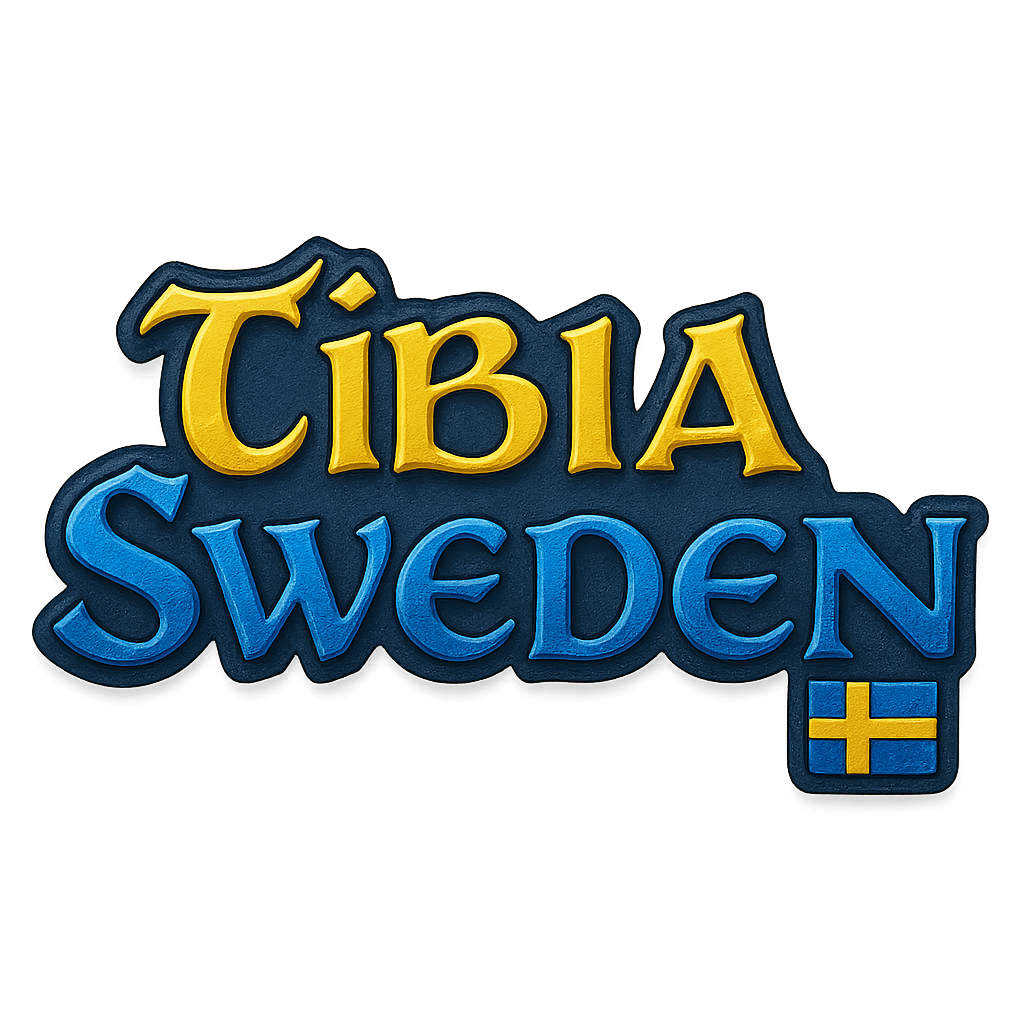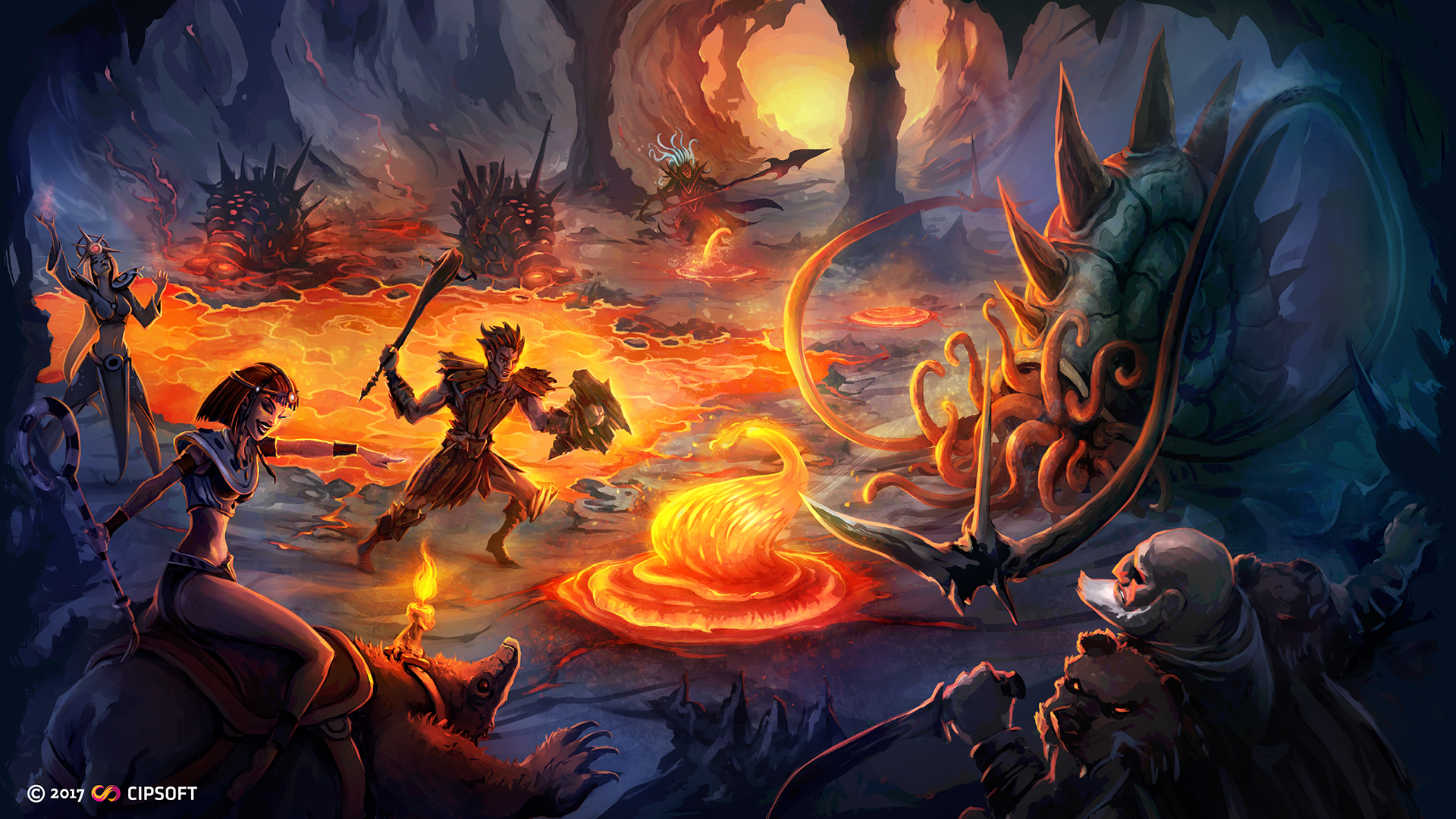Learn Tibia – step by step
Tibia Academy is your structured path into Tibia. Instead of just copying random “meta builds”, you get clear learning paths, deeper explanations and links to tools that help you make smart decisions – from your first login to a stable midgame character.
What is Tibia Academy?
The Academy is built as courses. Each course has a clear goal, a level range and concrete lessons. You can follow everything from the start or jump straight to what fits your character right now.
Who is it for?
- Completely new players who want a safe start.
- Returning players who want to understand all the new systems.
- Players who are tired of copying setups without knowing why.
What do you get?
- Structured learning paths from level 1–200+ with focus on understanding.
- Breakdowns of systems like Bestiary, Charms & Bosstiary.
- Links to TibiaSweden tools for numbers, planning and optimization.
How does it work?
- Pick a course based on your level and comfort.
- Follow the lessons in order or grab the parts you need.
- Use the tools to adapt the advice to your own character.
Tibia changes over time. Tibia Academy focuses on things that rarely change (core systems, ways of thinking, roles). When bigger balance changes happen, short notes can be added to the courses instead of rewriting everything from scratch.
Courses – Season 1
The first version of Tibia Academy focuses on giving you a solid foundation. More courses and deep-dives can be added later, but already now you can follow a clear path from level 1 to around 200.
Recommended level: 1–100
New or Returning Player
Focus on a safe start, good basic settings and understanding the core of the game instead of rushing levels.
- UI & settings, basic safety.
- XP, skills, training and stamina.
- First steps into Bestiary & simple hunts.
Recommended level: 100–200
The Road to a Stable Midgame
Step up your hunts, make smarter gear choices and take more responsibility in team hunts.
- Choosing hunts by risk, reward & comfort.
- Gear logic: defensive, offensive, balanced.
- Team roles for EK, RP, ED, MS and Monk.
Recommended level: 50–200+
Bestiary, Charms & Bosstiary
A systems-focused course that helps you get real value from Bestiary and boss content without wasting time.
- Which creatures are “worth” grinding.
- How to actually use Charms effectively.
- Bosstiary basics & simple boss routes.
How to use Tibia Academy
You don’t have to follow everything in detail. The goal is to give you a clear, educational framework – you decide how hard you want to optimize.
- 1. Check which course best matches your level and how confident you feel in the game.
- 2. Read the course overview and note which parts feel most relevant to you.
- 3. Use TibiaSweden tools (calculators, bestiary pages, boss timers) where they’re linked in.
- 4. Come back when you change level range or when a major update hits.
New or Returning Player
This course is for players who are completely new or coming back after a long break. The focus is on a safe start, good core settings and understanding basic game mechanics before you start chasing “maximum XP/hour”.
- No previous Tibia experience needed. Basic computer skills are enough.
- Understand how XP, level, skills and stamina relate to each other.
- Have a clear and safe set of core settings and hotkeys.
- Know a few safe starts, basic quests and simple hunts.
Lessons
Your first login sets the tone. With a few simple settings, the game becomes both clearer and safer. Here we focus on things almost everyone benefits from changing early.
- Create character & choose world: pick a world type (e.g. Optional PvP if you want less war in the beginning).
- Go through the UI: make sure HP/MP, the battle list and your backpacks are clearly visible.
- Hotkeys: bind potions, healing spells and “use” to comfortable keys (for example 1–5).
- Chat & channels: learn where the server log, local chat and help channel are.
- Safety settings: enable things like “stop attack at low HP” if you want an extra layer of security.
Here we clarify the basics: what XP does, how skills work and why the stamina bar matters more than many people think.
- XP and levels: XP raises your level, giving more HP/MP and sometimes unlocking new options (quests, gear).
- Skills: weapon skills, magic level and shielding train by using them – not from XP alone.
- Training: you can train actively (hitting creatures) or via different training systems in the game.
- The stamina bar: the color of your stamina shows how “fresh” your character is. Ideally, don’t grind when it’s too low – you get less value from your time.
- Taking breaks is also progress: sometimes it’s smarter to log out, refill stamina and come back later than to push on while exhausted.
Bestiary is the game’s way of rewarding you for hunting the same creatures. It gives you both information and Charm Points you can spend later.
- What is Bestiary? a collection where each creature has its own “entry” that fills as you kill it.
- Rewards: at certain kill counts you unlock detailed info about loot, stats and gain Charm Points.
- Good early targets: pick simple, safe creatures near town that you would hunt anyway.
- Connection to Charms: Charm Points are later used to buy effects you can assign to monsters.
- Think long term: even early on, you can “passively” build Bestiary just by choosing the right hunts.
Your first hours matter a lot: if you die several times and buy the wrong things, it’s easy to lose motivation. Here we focus on safety and simple economy.
- Follow the game’s intro: complete the beginner area properly – it’s designed to teach you the basics.
- Cheap hunts: choose spots where you can manage with cheap potions and basic gear.
- Simple key quests: prioritize quests that give quality of life (better travel, a bit of extra capacity or small permanent boosts).
- Avoid big purchases early: don’t buy expensive weapons or sets before you’re sure you like your vocation.
- Get used to selling loot: always empty your backpacks at NPCs – small sums add up quickly.
The Road to a Stable Midgame
Course 2 is for players who already know the basics but want to play more deliberately. It’s about picking the right hunts, building sensible gear setups and understanding your role in team hunts – so you don’t just level, you actually grow as a player.
- You should have basic control of your vocation and be able to handle simpler solo hunts.
- Be able to choose hunts based on risk, reward and your budget.
- Understand the difference between defensive, offensive and balanced gear setups.
- Know your role in team hunts – whether you play Knight, Paladin, Druid, Sorcerer or Monk – and how to support the rest of the team.
Lessons
Not every “good” hunt is good for you. It depends on skills, gear, budget, server state and how comfortable you are. Here’s a simple checklist.
- Damage type: find out what kind of damage the creatures do and compare it to your resistances.
- Mob density: high density requires more focus and better gear, low density means low XP/hour.
- Supply cost: estimate how many potions/runes you burn per hour.
- Death risk: take lag, mistakes and sudden damage spikes into account.
- XP vs profit: decide whether you’re after XP/hour, profit or a mix – and pick spots accordingly.
A “good” set isn’t always the most expensive one. It’s the set that fits your playstyle, your hunts and your wallet. Here’s a way to think about it.
- Defensive set: focused on HP, armor and resistances. Great for new spots or dangerous creatures.
- Offensive set: more damage, less safety. Good when you know the spot and trust your reactions.
- Balanced set: a bit of both – often the most realistic for everyday hunting.
- Priorities: upgrade the slots that make the biggest difference first (armor, ring, amulet) for the hunts you actually do.
- Match to mobs: swap rings/amulets based on damage type instead of using the same setup everywhere.
In team hunts, it’s not just your damage that matters. It’s also about responsibility, positioning and communication – and how Monk fits in alongside the classic four vocations.
- EK / Knight: keeps mobs together, stands in front, takes the hits. Key: good positioning and not overpulling.
- RP / Paladin: consistent ranged damage, helps focus dangerous targets, stays safe while still contributing.
- ED / Druid: support, healing, paralyze and control. Keeps the team alive when mistakes happen.
- MS / Sorcerer: heavy area damage, but also responsible for not blasting lures at the wrong time.
- Monk: a melee fighter combining martial arts and mystical powers. Can provide strong melee damage and support (e.g. healing or utility), often positioned just behind or beside the knight. Requires good timing and positioning to shine.
- Communication: simple callouts are enough: “low mana”, “care”, “stack here”, “lure done”. You don’t have to roleplay a raid leader – just be clear.
Between level 100–200 you unlock a lot of “real” Tibia content. It’s smart to invest some time into access and QoL quests instead of only running the same hunting spot.
- Access to new areas: do quests that unlock stronger hunts you plan to use later.
- QoL quests: anything that improves travel options, speeds up movement or gives small permanent bonuses is worth it.
- Hunt-specific access: some of the best spots require quest chains – prioritize the ones you actually care about.
- Combine with levelling: try to weave quests into your normal gameplay instead of splitting “quest days” and “XP days” completely.
Bestiary, Charms & Bosstiary
This course focuses on the systems around Bestiary, Charms and Bosstiary. The goal is to help you get strong value from them without making things unnecessarily complicated. It fits all vocations and can be combined with both Course 1 and Course 2.
- You should have completed a few Bestiary entries and feel comfortable choosing basic hunts.
- Know which kinds of creatures are “high value” to focus on in Bestiary.
- Understand how different Charms work in practice and when they’re worth the points.
- Be able to plan simple boss routes based on Bosstiary and your own level.
Lessons
Bestiary gives both information and Charm Points. Here we go through what the levels mean and how to avoid wasting time on the wrong creatures.
- Levels: each creature goes through several stages – more kills unlock more info and more Charm Points.
- Information: you unlock detailed HP, damage types and loot data as you progress.
- Pick the right targets: focus on creatures you already want to hunt for XP/loot instead of odd ones you’ll never see again.
- “Cheap” Bestiary mobs: enemies that are easy, densely packed and have decent loot are perfect for progress.
Charms can make a big difference – but only if you use them correctly. Here’s a simple way to think about offensive, defensive and utility charms.
- Offensive charms: increase your damage against specific creatures. Great when you farm the same target a lot.
- Defensive charms: reduce damage taken from a given monster. Perfect for dangerous creatures or bosses you face often.
- Utility charms: for example improved loot chances or special effects. Valuable for long-term grinding.
- Priorities: start with charms that help you where you play the most – and where you struggle or die the most.
- Change over time: it’s normal to change charms as you move into new level ranges and hunting spots.
Bosstiary rewards you for facing the same boss multiple times. It can feel overwhelming, but you don’t have to start with the hardest ones.
- Progress: each boss kill gives progress – after a certain number of kills you unlock different rewards.
- Start simple: focus first on bosses you already do, such as easier daily or weekly bosses.
- Routine: do a small boss route once or twice a week instead of trying to do everything in one session.
- Timers & planning: use a boss timer or simple list so you don’t have to track everything in your head.
The real win is when you don’t have to choose between XP, loot and progression. Often you can get at least two of the three at once – sometimes all three.
- Pick the right spot: look for hunts where creatures you want for Bestiary also give decent XP and loot.
- Session thinking: decide in advance whether a session is “progress-focused” or “XP-focused” and choose spots accordingly.
- Track your progress: check Bestiary/Bosstiary after a few sessions to see concretely what you’ve accomplished.
- Link to other courses: combine this mindset with Course 2’s view on hunts & gear to get a complete picture.


